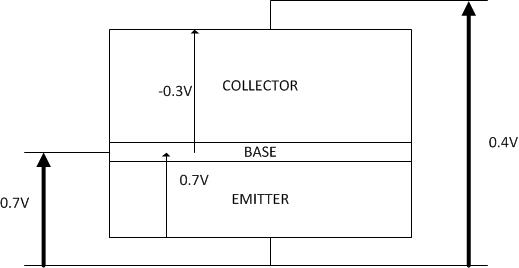In a bipolar transistor, the emitter has a much higher doping than the base. When you apply a forward bias to the base-emitter diode, current will flow, and due to the higher doping in the emitter, a lot more electrons flow from the emitter into the base than holes flow from the base into the emitter.
Current in a semiconductor can flow via two major mechanisms: There's "drift" current, where an electric field accelerates electrons in a certain direction. That's the simple way of current flow we're all used to. There's also "diffusion" current, where electrons move from areas of higher electron concentration into areas of lower concentration, much like water soaking into a sponge. However, those diffusing electrons can't move around forever since they will, at some point, hit a hole and recombine. That means diffusing (free) electrons in a semiconductor have a half-life and a so-called diffusion length, which is the average distance they travel before recombining with a hole.
Diffusion is the mechanism by which a diode junction creates its depletion region.
Now, if the base-emitter diode is forward-biased, the depletion region of the base-emitter diode gets smaller and electrons begin to diffuse from this junction into the base. However, since the transistor is built so that the diffusion length of those electrons is longer than the base is wide, a lot of those electrons are actually able to diffuse right through the base without recombining and come out at the collector, effectively "tunneling" through the base by not interacting with the holes there. (Recombination is a random process and doesn't happen immediately, which is why diffusion exists in the first place.)
So in the end, some electrons end up in the collector by random movement. Now that they are there, the electrons can only get back into the base when they overcome the forward bias voltage of the base-collector diode, causing them to "pile up" in the collector, decreasing the voltage there, until they can overcome the base-collector junction and flow back. (In reality, this process is an equilibrium, of course.)
With the voltages you apply to the base, emitter and collector, you only create the electric fields in the semiconductor that cause drift of electrons towards the depletion region, changing the concentration of electrons in the crystal, which then results in diffusion current flowing through the base. While single electrons are influenced by the electric fields created by the voltages at the transistor's terminals, they do not themselves have a voltage, only energy levels. Within a part of the crystal that is generally at the same voltage, electrons can (and will) have different energy. In fact, no two electrons can ever have the same energy level.
This also explains why transistors can work in reverse, but with much less current gain: It is harder for electrons to diffuse into the highly doped emitter region than into the lightly doped collector since the electron concentration is rather high there already. That makes this path less favorable for electrons than in the non-reversed transistor, so more electrons just flow straight out of the base and the gain is lower.




